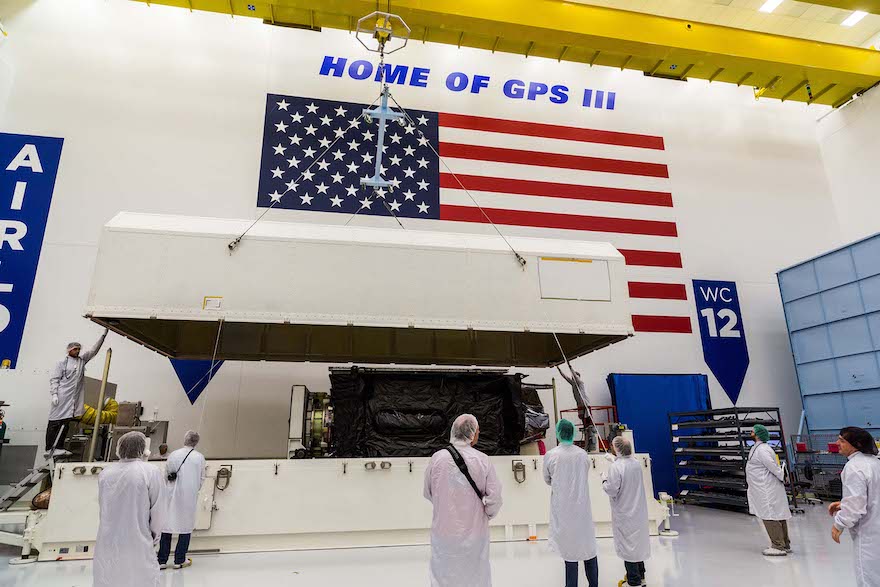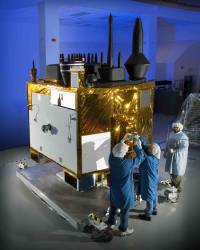The third next-generation GPS III satellite arrived in Florida on February 5, destined for an expected April launch. GPS III SV03, nicknamed “Columbus” will add to the team anticipated to eventually number 32 next-generation GPS III/GPS III Follow-On (GPS IIIF) satellites. Lockheed Martin has designed and is building the fleet to modernize today’s GPS constellation with new technology and capabilities.
[Photo above: 62nd Airlift Wing, SMC, and Lockheed Martin team members work on unloading the satellite transport container with GPS III SV03 “Columbus” upon its arrival at Space Coast Regional Airport in Titusville, Florida, Feb. 5, 2020. U.S. Air Force photo / Lt. Col. Maggie Sullivan]

Meanwhile, on Jan. 13, the first GPS III satellite, GPS III SV01 (“Vespucci”), was set “healthy and active” by the 2nd Space Operations Squadron (2 SOPS). 2 SOPS is now using the GPS III Contingency Operations (COps)-upgraded OCS ground control system to operate both the new GPS III and previously launched GPS satellites.
GPS III SV02 (“Magellan”), launched on Aug. 22, 2019, has completed on-orbit testing and is currently awaiting its turn for integration into the constellation.
On Jan. 21, the newly created U.S. Space Force called up GPS III SV04 for a summertime launch. GPS III SV05–09 are in various stages of assembly and test at Lockheed Martin’s large satellite production line near Denver.
The company is expected to soon complete its critical design review with the Space Force to begin production on the first two GPS IIIF satellites under contract. Once the 11th new satellite is launched, the advanced GPS IIIF capabilities will start becoming operational. These will include a fully digital navigation payload, a regional military protection capability, an accuracy-enhancing laser retroreflector array, and a search & rescue payload.






